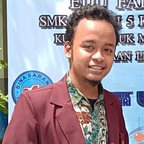Define Problem with Critical Thinking
Hello everyone, let me introduce myself, my name is Agung Prabowo, I am an 8th semester student from Singaperbangsa Karawang University and majoring in Informatics Engineering. I am currently participating in the Gigih 2.0 Program, a program initiated by the Anak Bangsa Bisa Foundation, an institution affiliated with one of the largest tech companies in Indonesia, namely Goto. In this article, I will tell you a little about how we can analyze a problem, break down the problem with critical thinking.
Of course, many of us are familiar with the term critical thinking. Critical thinking is the ability to think clearly and rationally about what to do or what to believe. Critical thinking includes the ability to engage in reflective and independent thinking. Of course, critical thinking is very helpful for us in solving a problem, analyzing a problem, so that we will not be in a hurry to make a decision or take an action.
On this occasion, I would like to share a little about how I do critical thinking on a statement, namely “Success is only for talented people”. This time I will use the help of QFT (Question Formulation Technique), According to the creating organization, the QFT “helps all people create, work with, and use their own questions — building skills for lifelong learning, self-advocacy, and democratic action. ” As a classroom tool for teaching and learning, the QFT is useful to promote inquiry, discussion, debate, project-based learning, and more. The QFT process itself is Produce, Improve, Prioritize, Plan, and Reflect.
- Produce
At this stage we write down as many questions as possible related to the statement and we record all the questions one by one. At this stage I wrote the question like this.
- Improve
Next is the improve stage. At this stage we make a list of the questions that we have made previously and then we group the questions into 2, namely close and open questions. At this stage I do it like this.
- Prioritize
At the previous stage we realized that the questions we have created quite a lot so that we need to prioritize the questions. At this stage we will choose 3 questions that become priorities or that will help us the most in finding answers to these statements.
- Plan
Then is the plan stage, at this stage we make a plan about what to do next, describe what we most want to do from the question. At this stage I made it like this
- Reflect
At this stage we reflect on the QFT process that we have done, explain what you’ve learned, how your perspective has changed, etc. at this stage I do a reflect and make it like this.
Conclusion
My conclusion to the statement “Success is only for talented people.” Is disagree. Most of us often think that a talented person can definitely achieve success or at least he will be much easier to achieve that success. But in my opinion this is not entirely true. It is undeniable that talent helps us in doing everything, but talent is not the only factor in determining success, if talent is only a factor in determining success, shouldn’t many people be successful now? Talents that are not accompanied by hard work and sufficient training will lose to people who have a strong will and also high dedication in learning and also doing this. A real example is the soccer player Cristiano Ronaldo, although dubbed a talented player since birth, but to be in his current position he requires a lot of training and not a moment, he can even train harder and harder than other players. , it is the accumulation of what he has done so far that can make him achieve success, not just relying on talent alone.
This article is a little sharing from me about what critical thinking is and how I use QFT as a tool to define problems more easily, I hope this article can be useful for others. Feel free to discuss about this in the comment section.
thank you
